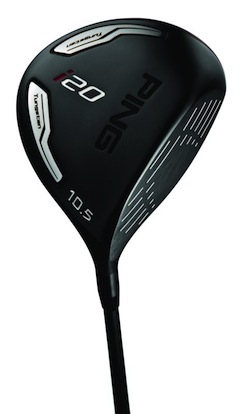 PING’s 2009 i15 driver was aimed at players ranging from low single digit handicaps to players at the tour level and ran into some design issues. The CoG (center of gravity) was fade biased, and the bulge was too pronounced making it too hard to control even for most tour players. There was a small following of players that loved it because it was lower spinning and since the CoG was closer to the face, the ball came off hot. PING learned from this endeavor when engineering the new PING i20 driver. PING has also been able to broaden the handicap range for the i20 making the i20 a forgiving “players” driver. The newest i-series driver is still targeting players looking for a lower launching, lower spinning driver but with the needed forgiveness that the i15 was lacking.
PING’s 2009 i15 driver was aimed at players ranging from low single digit handicaps to players at the tour level and ran into some design issues. The CoG (center of gravity) was fade biased, and the bulge was too pronounced making it too hard to control even for most tour players. There was a small following of players that loved it because it was lower spinning and since the CoG was closer to the face, the ball came off hot. PING learned from this endeavor when engineering the new PING i20 driver. PING has also been able to broaden the handicap range for the i20 making the i20 a forgiving “players” driver. The newest i-series driver is still targeting players looking for a lower launching, lower spinning driver but with the needed forgiveness that the i15 was lacking.
It was great for The Sand Trap to meet up with PING Senior Design Engineer Marty Jertson to learn more about this driver at the PGA Show in Orlando this year. Marty not only knows how to design great performing clubs but he can also play himself, qualifying for the Justin Timberlake PGA Tour event twice and qualifying for last year’s PGA Championship. Thanks to Marty, The Sand Trap was able to get some of the finer technology details about the i20 driver that most golfers might not know about.
Technology
The PING i20 is constructed from Ti 8-1-1 titanium, which is a lighter, lower-density titanium alloy that allows for a specific weight allocation. This adds to forgiveness and helps free up weight for the the tungsten weights on the sole. These two ten-gram weights account for ten percent of the total mass of the club. This allows PING to drive the inertia up, something the i15 lacked. Those dense tungsten sole weights in the head not only increase the MOI (moment of inertia) but also position the CoG for a low-spin, penetrating trajectory.
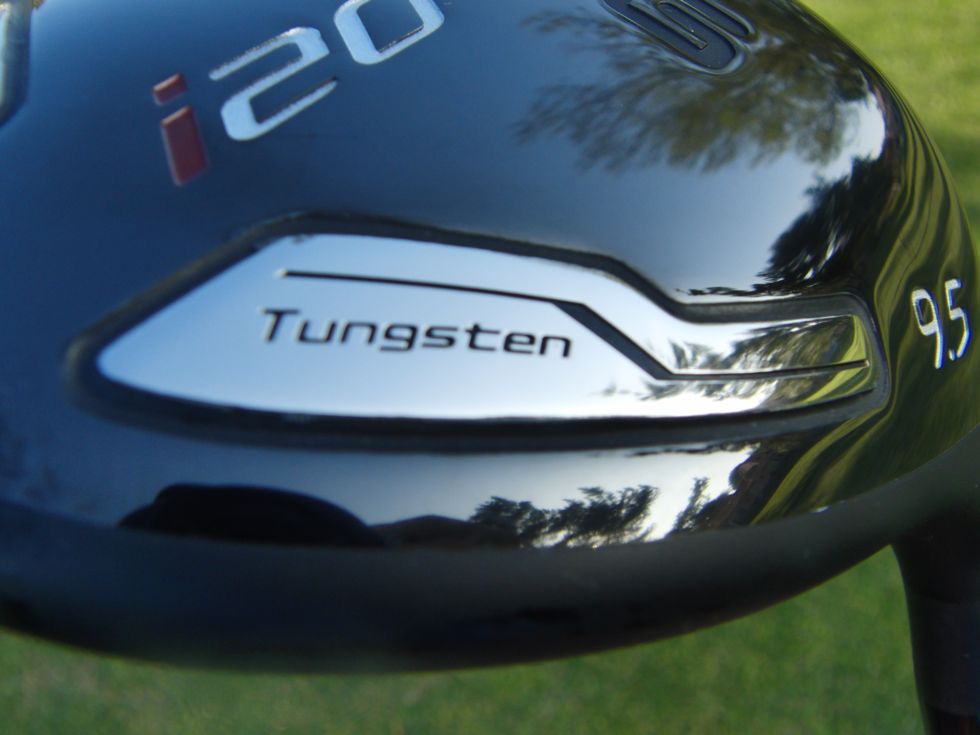
Drivers are all about hitting it as far as you can and to do that you need to create speed. The i20 is no different. Utilizing the same advances that PING engineers into the G20, they are able to make the driver very aerodynamic. This helps players with higher swing speeds (100mph and above), these players are in the best position to take advantage of the aerodynamic design. The faster you swing a driver, the more aerodynamics matter because of increased drag. The curvature of the crown allows for optimal aerodynamic to generate a faster club because of how the air flow interacts with the body of the i20. This design reduces drag for maximizing clubhead and ball velocity.
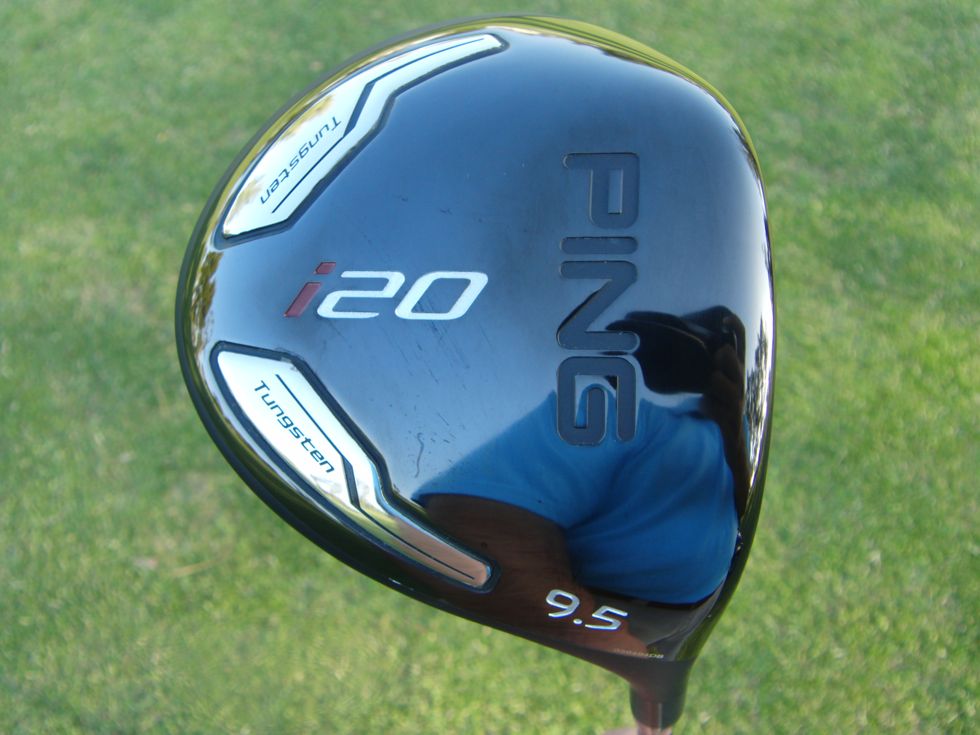
PING is also able to add even more speed to your drives by utilizing PING’s motion capture system. Engineers studied how the toe and heel of the golf club moved on the downswing into impact. Since the toe of the club is moving much faster than the heel, PING engineers moved the hosel axis slightly back from the face, which lowers the inertia in that area. By making the head rotate in faster from the ball’s perspective, the i20 picks up more ball speed. PING can manipulate variances in wall thickness because of the kind of titanium alloy they use to balance out the CoG for greater forgiveness, .
John A. Solheim, PING Chairman & CEO sums it up:
In the i20 series, we’ve combined workability, distance and forgiveness with the goal to make any golfer a more versatile and complete player. We’ve engineered the i20s with a solid feel and generous forgiveness but also a degree of workability for the player who wants full command of the clubface for controlling trajectory and shot shape. Anyone who is passionate about their game is going to be very confident and capable with this game-improvement technology.
John A. Solheim, PING Chairman & CEO
Esthetics
The first thing you’ll notice is the new look to the crown called the black matte finish. This means the driver doesn’t have the shiny polish you’ll normally see in most drivers. I’ve never seen a driver like this and love the stealthy no-nonsense design. The distinctive matte-black, non-glare finish frees the player from distraction, allowing you to focus on pounding this club. The face is also black, a PVD finish that relly makes the white groovers on the face stand out. The club sits very square to sightly open, perfect for hitting push draws. In the past couple years I’ve gotten to take a look at a few tour-issue drivers and this is what this club reminds me of. The finish, the deep face and clean lines make for one of the coolest looking drivers this year. Both the TFC and Project X Black shafts are black and fit the dark i20 head nicely.
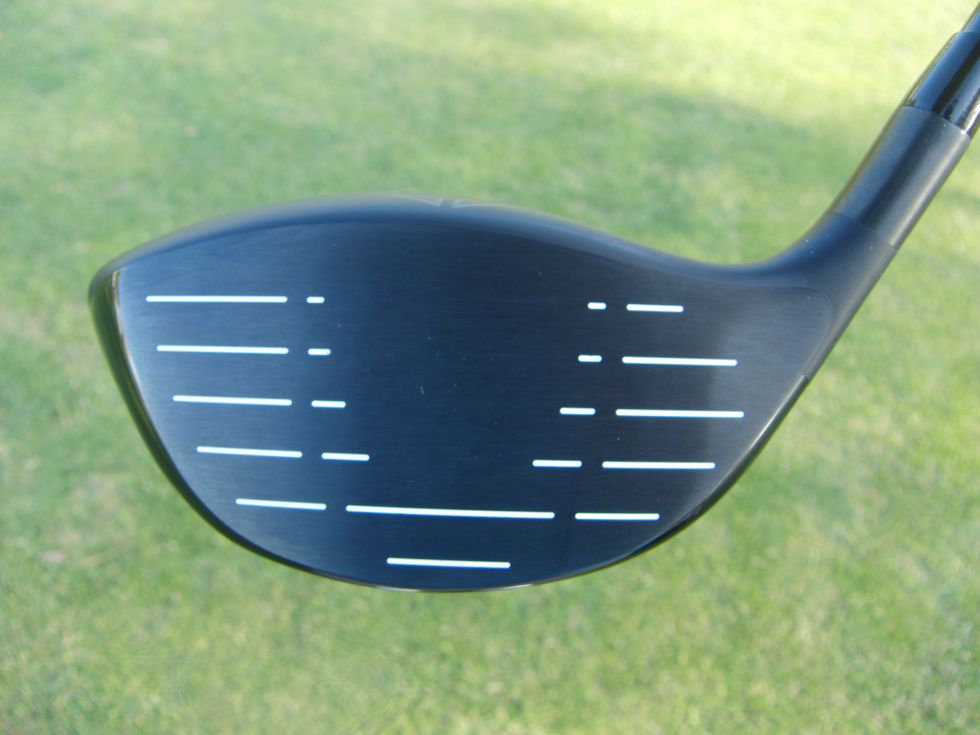
The black matte crown came into fruition as more function than style. PGA Tour winner Bill Lunde had an issue with what most would consider the “classic” shinny crown. When Lunde went to hit a tee shot during a tournament, his driver caught the reflection of one of the marshals hold up the “quiet” sign. So to get rid of the distraction, PING starting making some prototype drivers with the light absorbing black-matte crowns. One of the hottest players on tour, Hunter Mahan, plays a G20 with the same finish. Also found on the crown is the familiar half-moon alignment aid that all PING driver have, but this one on the i20 is the most subtle I’ve seen.
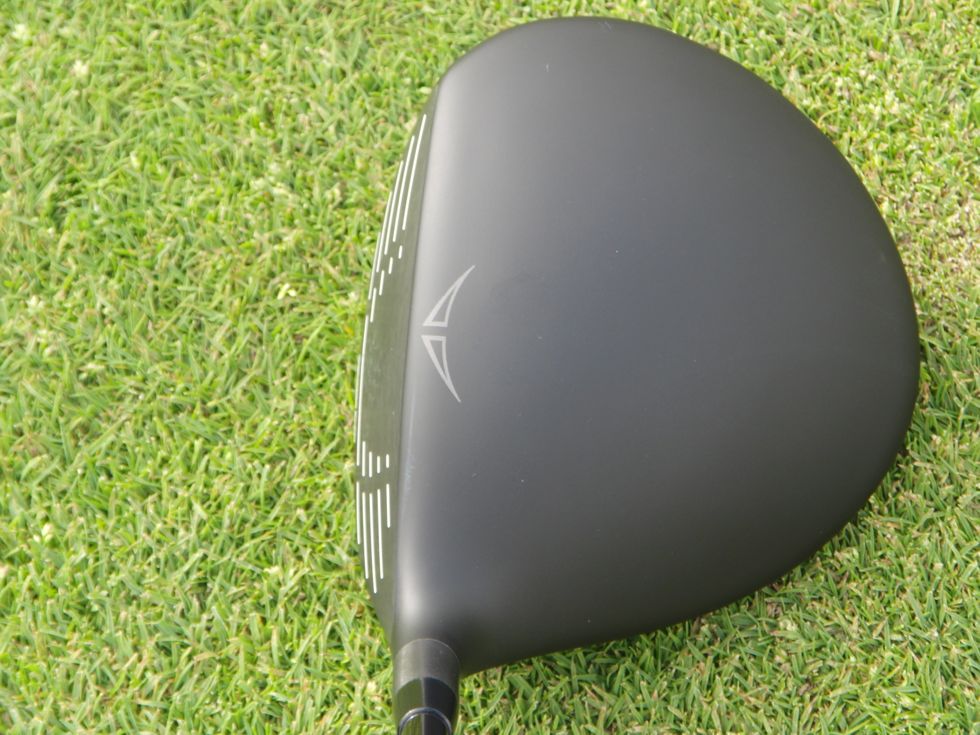
The non-glare finish absorbs light, allowing the player to focus without distraction. Our tour pros are very enthusiastic about the finish – but even more so about the i20s’ performance. Players are able to execute any shot they want with confidence.” The 460cc driver head is highly aerodynamic to reduce drag, which generates clubhead speed and ball velocity for maximizing distance. The i20 driver is incredibly long but also highly accurate. We gave the fairway woods and hybrids the same matte finish, and their designs offer the high-launching forgiveness that makes them reliable from all turf conditions and from the tee.
John A. Solheim, Chairman & CEO
Playability and Feel
In deciding what loft to get in the i20 driver, I was on the fence between the 9.5° and 10.5°. I knew the head was designed to hit the ball lower and I didn’t want to be hitting low bullets that only flew 220 yards. I decided on the 9.5° in the Project X Black 6.0 graphite shaft. Talking with Marty Jertson at the PGA Show, he told me the TFC stock shaft by PING has gotten some great responses, but I was looking forward to the PX Black since it seems to be the shaft that would fit my profile the best. The reason is Project X Black has more torque and launches the ball higher with moderate to low spin. The i20 head is already low launching and low spinning and I don’t have the swing speed or impact alignments to need the TFC. So I figured the PX Black would be a perfect fit and I was pleased to find the combo worked well.

The i20 is 1/2″ shorter than the G20 and previous PING drivers, measuring at 45 1/4″. Definitely noticeable if you’re used to something longer. This gives the driver a greater sense of control at set-up. Some associate a shorter shaft with distance loss but I didn’t notice any, felt like my accuracy was very similar compared to my G20 at 45 3/4″.
Thanks to PING Wrx I was able to order a driver that is even a little more open (face aimed more to the right) at address than the “off the rack” i20. This is part of the customization you can get at PING. If you specify what lie, loft and face angle you want your driver to be, they will digitally check the specs of the head until they find one that matches your order.
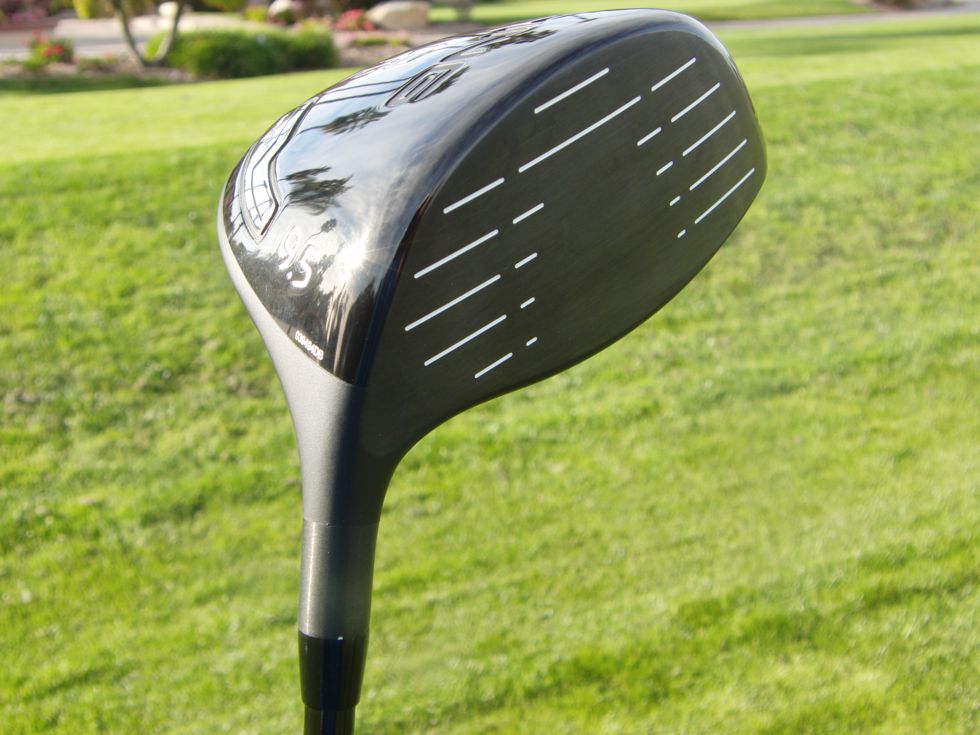
After hitting the first few tee shots my first reaction was that PING nailed the sound here, solid, but muted compared to other drivers on the market. It’s a sound I like and fits the appeal of a tour inspired weapon.
I was able to do some testing with the i20 comparing it to my G20. I hit 10 decent drives with each club on a Foresight launch monitor and got to see what the real data was. I definitely notice the i20 launches the ball lower compared to my G20. According to the Foresight data my average launch angle for the G20 was 14.8°, the i20 came in two degrees lower with 12.4°. I can take a long tee and tee and high as I can and still only launch it at 16°,17°, with mid 2,000 rpm of spin. Perfect for down wind holes. On average a few degrees lower than normal, even though the i20 is the same loft, lie and face angle as my G20. Just as PING has advertised.

My spin rate was a little on the low side, for 10 shots an average of 2200 rpm with an average carry of 265 yards. The G20 on the other hand averaged 2750 rpm with a carry distance of 268.6. But when you look at the total distance the i20 rolls out to 296 yards while the G20 finishes at 288 yards. Again just as advertised, lower spin and more roll on the ground. Important to note that these numbers are what we might call in a “dome”. Not a true reflection of reality because you can’t always count on 30 yards of roll!
How did it perform on the course? I haven’t gotten to play as much as I like with it but I got a good idea how this driver works for me. I definitely notice the increase ball speed on the course, faster off the face with lower spin. Once the ball hits the ground it still has lots of gas left. Like a rock skipping across water, the ball propels down the fairway. Even though this driver is more compact looking than most on the market, I seem to find the center of the face more often than with the G20. Most shots come off fast and have very little curve, unless it’s a bad toe or heel hit.

Since the i20 is more compact from toe to heel and more curved, the ball’s start line can be more influenced by the bulge and roll. The face of every driver has bulge and roll while irons have none or very little. Bulge is the curvature of the face from its heel to its toe, while roll is the curvature of the face from the crown to the sole. Bulge starts the ball farther to the right on toe shots and farther to the left on heel shots and is a correction for the clubhead’s center of gravity (CoG) that causes hooking or slicing (gear effect) on offcenter hits. The collision between the clubface and the ball on the toe creates a torque that causes the club to twist – the club twists around the club’s CoG. In other words, manufacturers have built bulge into the face to counter the negative results of gear effect. So a shot off the toe will start more to the right and curve more to the left than the PING G20 model, vice versa with shots off the heel. Since toe shots also take spin off, I noticed a slight distance loss with shots missed off the toe because the ball didn’t stay in the air as long, thus not carrying as far as a shot hit in the center of the face.
The combination of the Project X Black and the i20 allowed me to hit some of the longest drives I’ve hit at my home course. It was easy to vary trajectory by adjusting tee height. Any sort of wind had very little effect on my shots. It’s a really great experience to hit this driver because of how clean and cool it looks at address and the pure “thwak” sound at impact. Very enjoyable feeling.
Specs
PING i20 Driver features: Lofts: 8.5, 9.5 and 10.5 for both righties and lefties.
Stock graphite shafts available in regular, stiff, or x-stiff flex. Golfers can choose from two stock shafts: the PING TFC (Tip, Flex, Control) 707D for a low-spin, boring trajectory, or the lighter Project X Black by True Temper, offering mid spin and a higher trajectory.
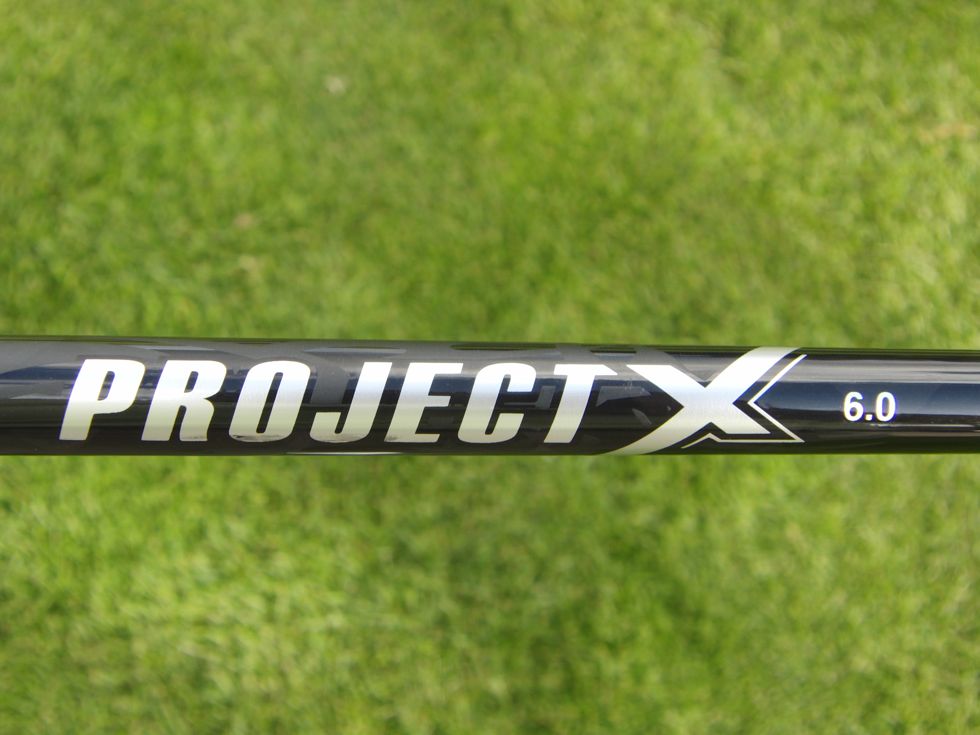
Loft Length Offset Lie° Head Weight Swing Weight ---- ------ ------ ---- ----------- ------------ 8.5° 45.25" No 58 204g D3 9.5° 45.25" No 58 204g D3 10.5° 45.25" No 58 204g D3
Conclusion
If you’re looking for a low spin monster, slightly open face and compact pear-shaped head, make sure to take some time to hit the PING i20 driver at your local golf store or demo day. If your looking for a higher launch driver, I’d recommend looking at a different driver with a larger footprint (longer from toe to heel and wider from front to back). If you find you love the look of the i20, get the most loft you can get. The driver is designed to launch lower, more penetrating flight than most drivers and will benefit players with higher swing speeds. The i20 is designed to deliver long, explosive drives and thanks to the tungsten weights on the sole, also offers a ton of forgiveness. The i20 driver’s black matte finish will reduce any glare, allowing for greater focus and makes for one of the best looking drivers on the market today.

I have an i 20 with the project x shaft. I have not hit drives this well in a very long time. It has turned back the clock a bit. I have the 707 in the 3 wood and hit a good 20 yards further than my old burner tp. They are both awesome clubs. I can’t wait to try the hybrid.
Can you please exand a little on the Ping Wrx. You mention “they will digitally check the specs of the head until they find one” Is this to imply that they dont actually create the head specifc to your specs or even bend one they just find one closest to your match? Does this mean there are that big of tollerances in their production that each club can vary some from the stated specs?
Also…very fine review. The specs you give on the comparisons between clubs I find the most interesting.
Thanks Rip24,
Yes there can be some slight variances (like any other company), and I’m pretty sure they digitally loft every head when it comes to Phoenix. You won’t see the ones that are “off” out there in retail stores. PING also does custom wood building (bending loft/lie).
Is the improvements from the i15 driver to the i20 big enough to sell my i15 in exchange for the i20?
i have just bought the i20 driver 10.5 degree stiff standard shaft having used it for 2 rounds find that i am hooking it i have been using the taylourmade r9 previously and prior to that i had used the i15 ping for about a year ok any tips on where i maybe going wrong ?
I also own the i20 10.5 707d stiff and also hooked it at first…upon closer look, my club measures exactly 45″ in length and SW was close to D0…I added about 5 grams of lead tape covering the tungsten weighted area (toe side only) to achieve the standard SW of D3. At D3, the club feels great, turns over predictively and flies straight…it’s a very easy club to turn over so I suspect the led tape as placed helps to slow the head from hooking and or from crossing my hands too soon…am still new to it and can’t say that I can take one side of the course out of play or that I am able to “work the ball” but in general, I am able to hit the ball directionally towards either half of the FW…it’s a very fun/satisfying driver to play and much more accurate (and longer) for me at D3 than it was at D0… My ball speed is around 142 with the 707d 10.5 with a mid-high trajectory…I actually hit the i20 PX6.0 9.5 a little higher and slightly farther but the PX6.0 felt a little loose to me and I didn’t feel Iike I knew where the ball was going to go…the 707D 10.5 (at D3) feels tighter and more accurate…each time out I feel a little more confident with it. I might take a fly on a 707d/9.5 but the 707d 10.5 at 45″ and D3 is a driver that will be difficult to knock out of the bag…it’s a very, very nice club.